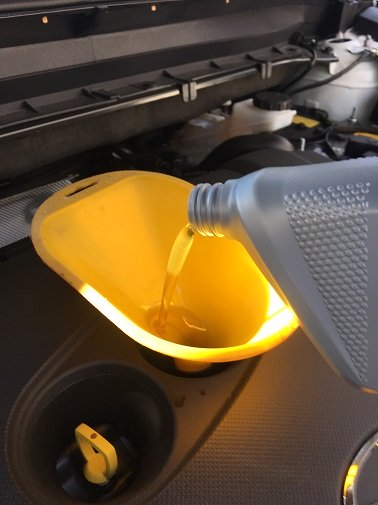Getting An Old Car Running
Article by Mark Trotta
Starting an automotive engine that's been sitting for years requires special procedures and precautions. Before trying to get an old car running, care needs to be taken to ensure internal parts don't get needlessly damaged or broken.
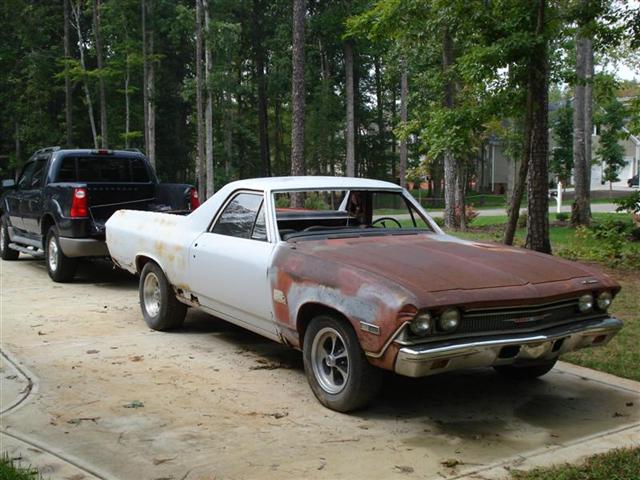
If the vehicle in question is new to you and you have no history on it, there's no guarantee the motor will start. Getting an old car running again will not only depend on your efforts, but also on the mechanical condition of the engine.
____________________________________________
____________________________________________
If it's the original motor of the car, and it's a classic car, you may consider not even trying to start it, and instead make plans to remove it from the car and rebuild it.
Read: Does My Engine Need A Rebuild?
Before you begin, remember the basics of an internal combustion engine. Aside from any mechanical issues it may have, given fuel and spark in the correct timing, the motor should start and run.
Let's break it down into four basic categories:
- Fuel - is it getting fuel?
- Air - is it getting air?
- Ignition - is it getting spark?
- Starting System - does the starter turn the motor over?
Reading Spark Plugs
To learn a little about a non-running motor, take out the spark plugs. Keep the plugs in order when you remove them. This will help you determine if only certain cylinders have issues.
Notice the spark plug part number and check it with a catalog or an auto parts store. Don't assume that the spark plugs you've removed are correct for that year, make, and model car.
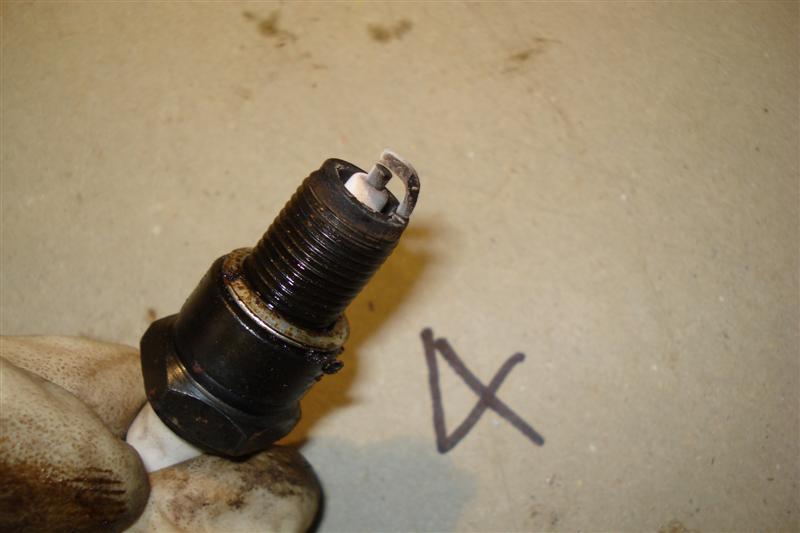
Reading the firing end of the plug reveals what kind of tune the motor was in when it last ran. There's probably dozens of various plug end appearances, but here's the ones most commonly found.
- Black, sooty plugs - Carbon fouling, caused by a rich fuel mixture.
- Oil deposits on all plugs - Worn piston rings and/or valve guides.
- Oil deposits on one or several plugs - Worn or broken piston rings on those particular cylinders.
The last thing you want to see on a plug tip is a broken insulator (the white ceramic part). This usually characterizes detonation, brought on by lean fuel/air mixture, engine lugging, over-advanced ignition timing, and/or incorrect engine modifications. Light tan to grayish color on the electrode of all plugs is normal.
Can Old Spark Plugs Be Re-used?
NOTE: If you choose to re-use the old plugs, use caution when sanding or cleaning off carbon deposits. You may damage the plug and/or potentially leave remaining grit on the plug, which could damage internal engine components.
____________________________________________
____________________________________________
Before re-installing spark plugs, pour some Marvel Mystery Oil (or similar lightweight fluid) into the spark plug holes. This will help free up the piston rings in the event they're stuck. One cap-full at a time is all that's necessary, and remember it takes time for the oil to penetrate.
Change Oil And Filter
Before trying to start the motor, why not drain and change the oil? Automotive engine oil degrades with time and can start losing its lubricating qualities in less than a year. You don't want to risk damaging something internally once the engine starts.
Before you drain the old oil, take the valve cover(s) off and pour fresh oil over the valve-train components while performing the oil change. Let it drain out with the old oil.
Be Patient
After the draining is complete, install a new filter and refill with the correct amount of fresh oil. You don't need the best quality oil here--any new oil is better than old dirty oil.
Check Engine Coolant
If you have no history of the car, drain and refill the engine coolant (or at least the radiator). I usually refill with straight water first, then if all goes well, I'll drain and replace the water with a coolant mix afterwards.
Diagnose Ignition System
Begin with a freshly-charged battery. If you have an automatic shut-off battery charger, great. If not, make sure you don't cook it by leaving it on charge too long!
Digital Multimeter
A multimeter is a test tool instrument designed to measure electrical values such as voltage (volts), current (amps), and resistance (ohms). There are two main types of multimeters, analog and digital.
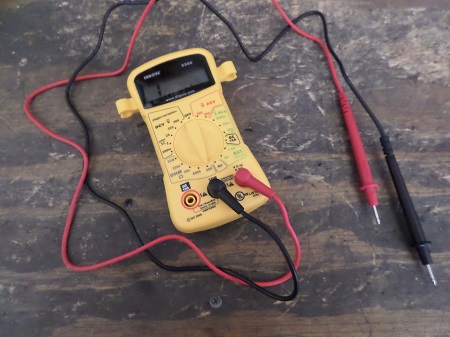
A Digital Multimeter is by far more common and actually easier to use. They have an easy-to-read numeric display, and one can be had for less than $20.
Check Wire Resistance
To check if a wire is good or bad, connect one test probe to one end of the wire, and the other test probe to the other end of the wire. With the multimeter on ohm setting, it should read .02 or less. Anything much higher than that, replace the wire and/or the terminals.
Check the resistance of the positive and negative battery cables with your multimeter. If bad, throw them away and replace with new ones.
Next, check the secondary ignition system, starting with the spark plug wires. These can be tested with a multimeter, or simply replaced if they feel stiff or hard to bend.
Read: Old Car Ignition
On cars with points-style distributors, take the distributor cap off. With the car ignition turned on, you should be able to 'rock' the distributor rotor back and forth and see if the points are sparking. The ignition coil can also be checked with a multimeter.
____________________________________________
____________________________________________
If it looks like the distributor can be removed easily, take it out to examine it closer. Inspect and/or replace the points and condenser (yes, you should change the condenser, too).
Pre-Lube Engine
On many automotive engines, you can prime the engine with oil with a drill attachment on the oil pump shaft. This would pre-lube the engine with oil and decreases the chance of any unnecessary damage on fire-up. It also lets you know the oil pump is working.
Crank Motor Over By Hand
With the spark plugs still removed (you may want to stuff a paper towel in the plug holes) crank the motor slowly by hand, if possible. This is easier on a stick-shift car, but if yours is an automatic you can put it in neutral and it may work. Use a large wrench or 1/2" drive socket on crankshaft balancer bolt.
If the motor doesn't turn, something is preventing it from spinning freely. Do not try starting an engine that will not turn over by hand - forcing it will very likely break something!
Once the motor turns over freely, continue on to the next step.
Fuel System
Sitting unused for several years, gasoline will turn to varnish. This was the case with my old 1968 Jaguar. The Jag had sat for nearly 20 years before I bought it, and when the carburetors were disassembled, I discovered that the old gas had hardened into varnish in the float bowls (see picture below).
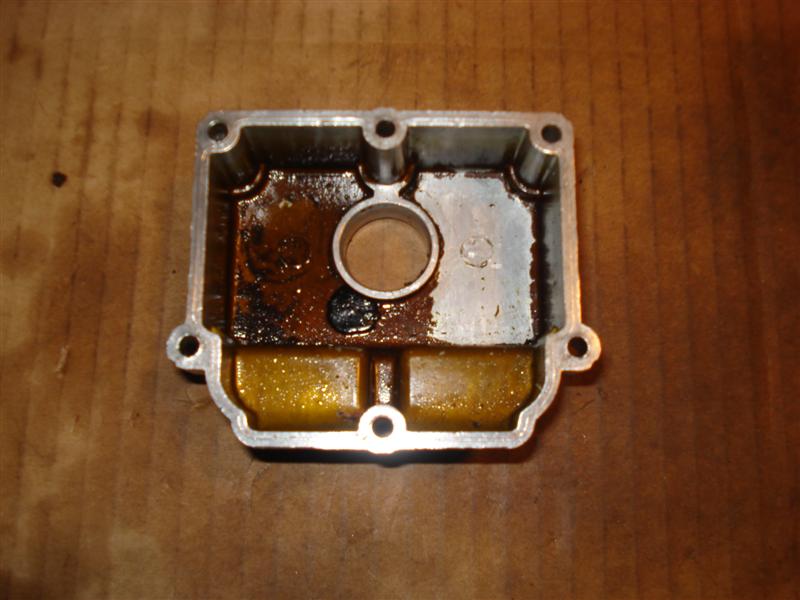
Carburetor Rebuild
A basic carb rebuild involves disassembly, removing gum and varnish, cleaning thouroughly, and then careful re-assembly with new gaskets. Depending on the type, your carb may also require new diaphragms, seals, or o-rings, too. Air passages should be blown clear with compressed air.
If you find that the old gas has turned to varnish, slowly and carefully scrape and clean the carb bowl before the rebuilding the carburetor. I cleaned the left side of this fuel bowl first to show the difference of the before and after cleaning.
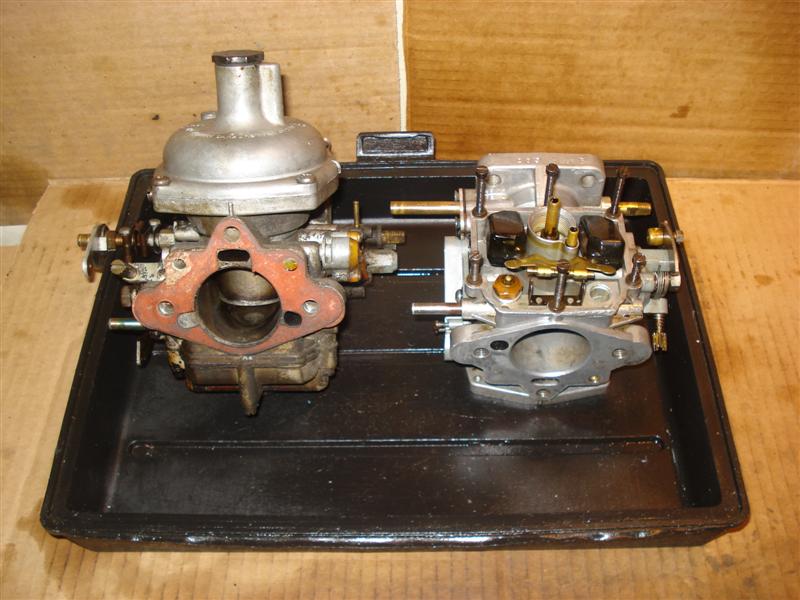
Soak the Carburetor
If you need to rebuild a really old and dirty carburetor, invest in a gallon can of Berryman's Chem-Dip. This stuff will dissolve the old dried-up remnants of fuel and remove any sludge. Be careful though, it will also eat plastics, puff up gaskets, and remove paint.
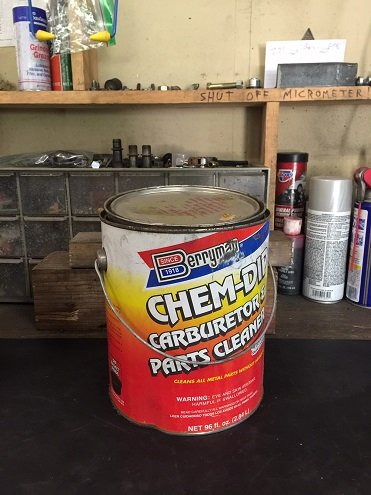
Shop: Berryman Parts Cleaner with Basket
Once the carb rebuild is done, remember to replace the fuel filter with a new one, and replace any old or dry-rotted rubber gas hoses.
Rusty Gas Tank Alternative
I am always hesitant to pour good gas into a 20+ year-old gas tank, so I usually substitute a plastic gas jug as a temporary gas tank (if the fuel pump is operative). On several occasions, I've rigged a 'gravity-feed' gas container, which hung from above the motor and connected right to the carburetor inlet, thus bypassing the need for an operative fuel pump. This allows you to see if the engine will run before investing further time and money.
Crank The Starter Motor
With the spark plugs removed and primary coil wire removed (you don't want to start the engine yet) see if the starter motor will crank by turning the key. If it does, you can check to see if the mechanical fuel pump is working.
____________________________________________
____________________________________________
Install new spark plugs, properly gapped, or clean and re-gap the old ones. Re-attach the primary coil wire. With good spark, fresh gas, and a fully-charged battery, you're now ready to see if the engine will fire up. The carburetor choke, whether it's automatic or manual, should be closed.
Starting Fluid
Crank the starter, but limit starter operation to a maximum of 5 to 10 seconds, and wait about a minute in-between tries. If it doesn't start up right away, a squirt of starting fluid into the carburetor may help.
Automotive engines can be kept running by repeated squirts of starting fluid into the carburetor, but that's never a good idea. Do not over-use starting fluid, there is the likelihood of washing the engine oil off of the cylinder walls, causing internal damage.
If the engine fires after starting fluid was sprayed, but doesn't continue to run, that tells you the ignition is O.K. You can then concentrate on the fuel system.
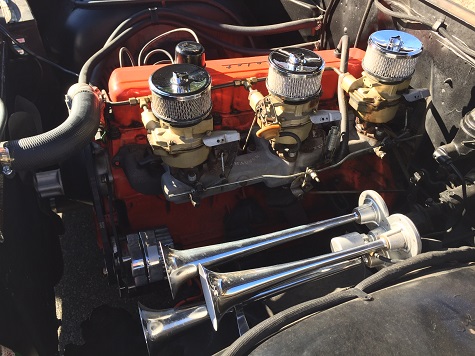
*****************************
Related Articles:
Read: Best Oil for Classic Cars
